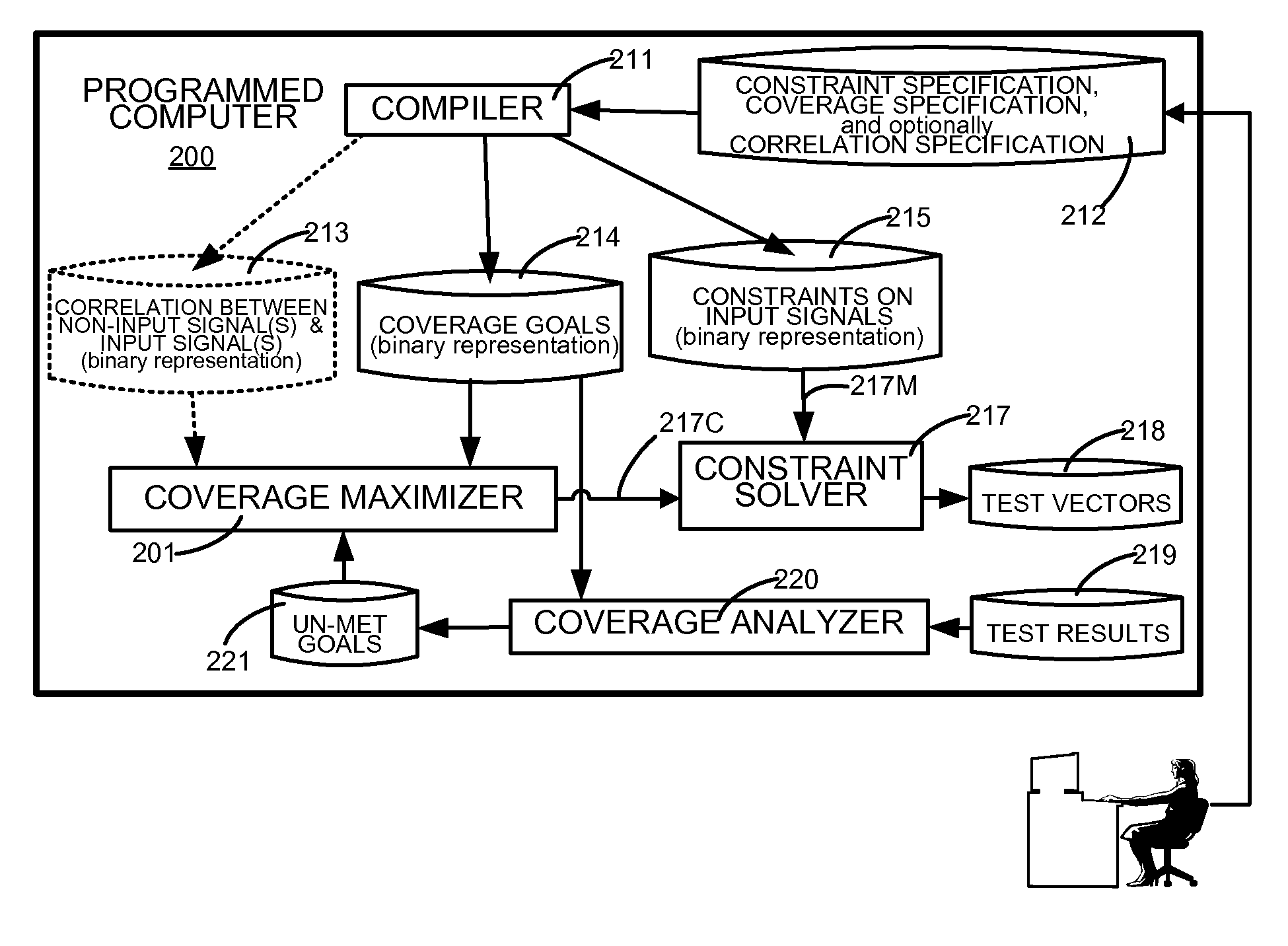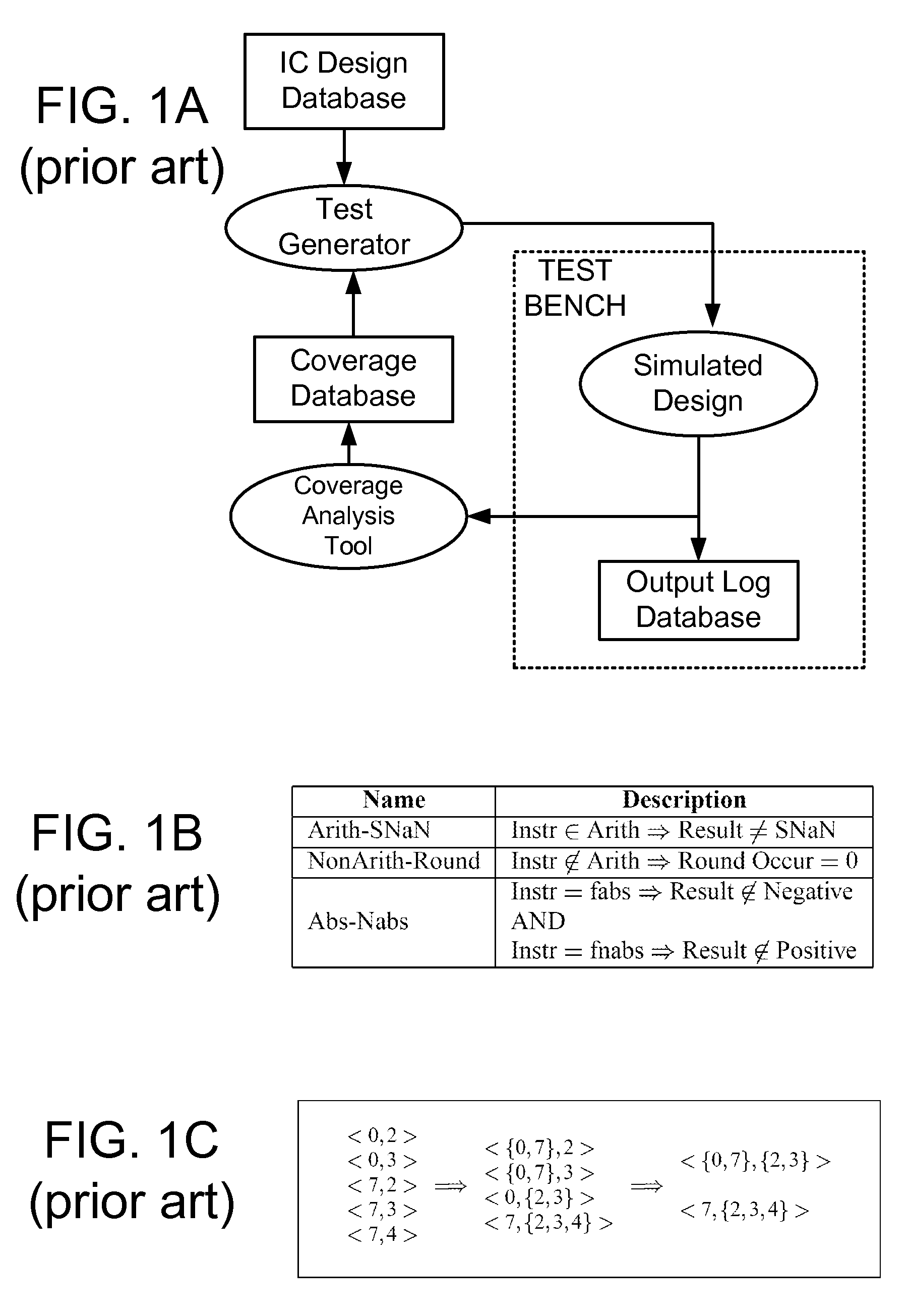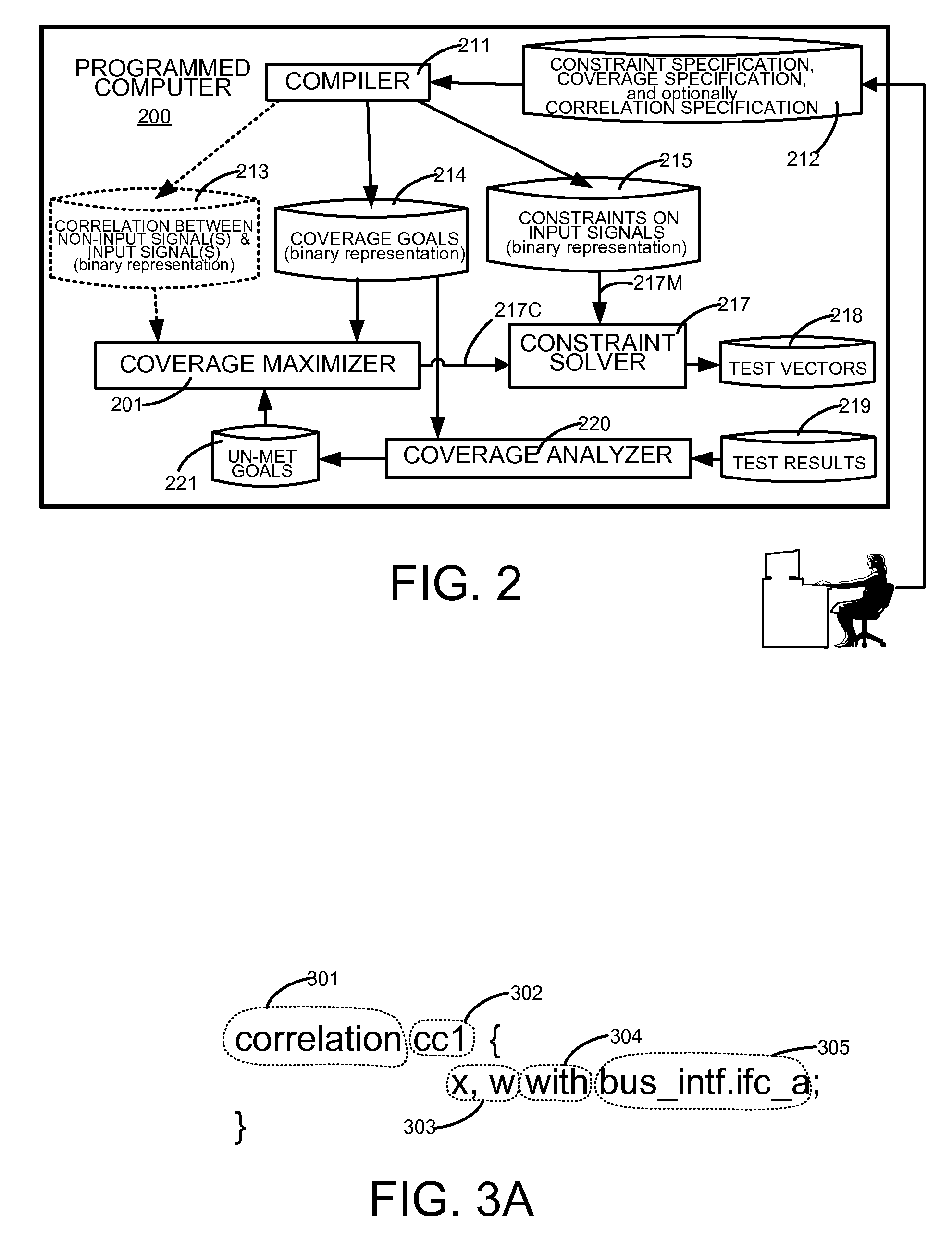Method for automatic maximization of coverage in constrained stimulus driven simulation
a stimulus driven simulation and automatic maximization technology, applied in the field of test design, can solve the problems of inability to guarantee that such events will in fact occur during a limited duration, and achieve the effect of improving functional coverag
- Summary
- Abstract
- Description
- Claims
- Application Information
AI Technical Summary
Benefits of technology
Problems solved by technology
Method used
Image
Examples
Embodiment Construction
[0027]A computer 200 (FIG. 2) is programmed with software (“compiler”) to read text files which specify constraints on input signals of an integrated circuit (IC) design in a constraints specification file, and coverage goals for the input signals in a coverage specification file. The two files are typically held in a non-volatile memory 212 of computer 200, and both files are normally expressed in a Hardware Verification Language (HVL), such as OpenVera or System Verilog.
[0028]Hence, compiler 211 (FIG. 2) that is included in computer 200 can be any OpenVera compiler of the type available from Synopsys, Inc. of Mountain View, Calif., or alternatively any System Verilog compiler that may be available in the industry, such as Questa compiler available from Mentor Graphics. Note that a compiler of the type commonly available in the industry is customized in various embodiments to maintain specific associations inside computer 200 between constrained signals and covered signals as descr...
PUM
 Login to View More
Login to View More Abstract
Description
Claims
Application Information
 Login to View More
Login to View More - R&D
- Intellectual Property
- Life Sciences
- Materials
- Tech Scout
- Unparalleled Data Quality
- Higher Quality Content
- 60% Fewer Hallucinations
Browse by: Latest US Patents, China's latest patents, Technical Efficacy Thesaurus, Application Domain, Technology Topic, Popular Technical Reports.
© 2025 PatSnap. All rights reserved.Legal|Privacy policy|Modern Slavery Act Transparency Statement|Sitemap|About US| Contact US: help@patsnap.com



